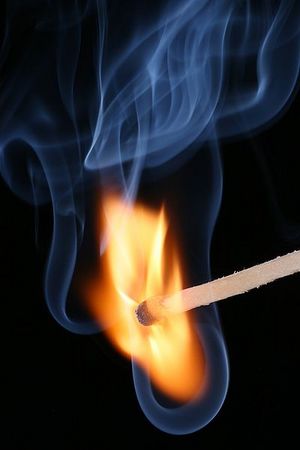A Definition of the Rule of Nines
The rule of nines is a method for approximating the extent of burns over a person’s body. It does not refer to determining the severity of a burn. Emergency medical technicians (EMTs), paramedics and other health care providers generally use either the rule of palm or the rule of nines when quickly determining the extent of burns. This assessment along with other factors such as burn severity is used to make critical decisions when providing medical care and transporting a patient to a hospital or, if the situation calls for it, when air lifting the victim to a burn center.
Familiarity With the Rule of Nines Burn Chart: The Adult Patient
Although the average layperson isn’t interested in learning how to use the rule of nines, it’s a good idea to at least learn the basics of the method and to become familiar with a rule of nines burn chart to which you can refer. It’s always beneficial for laypeople to understand as much as they can about how health care providers make decisions that affect them and their loved ones. There are many different charts for explaining the rule of nines; however, some of them can be a little confusing if the basics are not learned first, so I’ll cover them. Some differences exist between determining the extent of burns using the rule of nines in the case of an adult patient and that of an infant or child. It is helpful, but not necessary, to understand the anatomical positions of the body. The following areas of the body of an adult represent 9 percent of the total surface of the body:
1. Head and neck – 9% (4 1/2% for the front, 4 1/2 for the back)
2. Upper extremities (arms) – 18% (4 1/2% for the anterior, 4 1/2 for the posterior times 2 for each arm, totaling 18%)
3. Chest – 9%
4. Abdomen – 9%
5. Upper back – 9%
6. Lower back – 9%
7. Buttocks – 9%
8. Front of lower extremities (legs) – 18% (9% for the front of one leg, 9% for the front of the other)
9. Back of lower extremities (legs) – 18% (9% for the back of one leg, 9% for the back of the other)
10. Genital area – 1%
We have: 9 + 18 + 9 + 9 + 9 + 9 + 18 + 18 + 1 = 100.
Familiarity With the Rule of Nines Burn Chart: The Pediatric Patient
The percentages differ slightly for an infant or child because their heads are larger in relationship to the rest of the body. They are:
1. Head and neck – 18% (9% for the front, 9% for the back)
2. Arms- 18% (4 1/2% for the front of one arm, 4 1/2% for the front of the other, 4 1/2 for the back of one arm, 4 1/2% for the back of the other, totally 18% for the front and back of both arms)
3. Chest and abdomen – 18%
4. Entire back – 18%
5. Legs- 28% (7% for the front of one leg, 7% for the front of the other, 7% for the back of one leg, 7% for the back of the other, totalling 28% for both extremities)
6. Genital area – 1%
We have: 18 + 18 + 18 + 18 + 28 + 1 = 101 (Yes, 101%, not 100% like it is for the adult). What if we have a scenario in which only the anterior portion of a forearm is burned, but the entire hand is burned? What is the extent of burns using the rule of nines? The answer is: roughly 3.25 percent.
Source:
Current EMT license, NREMT certification


